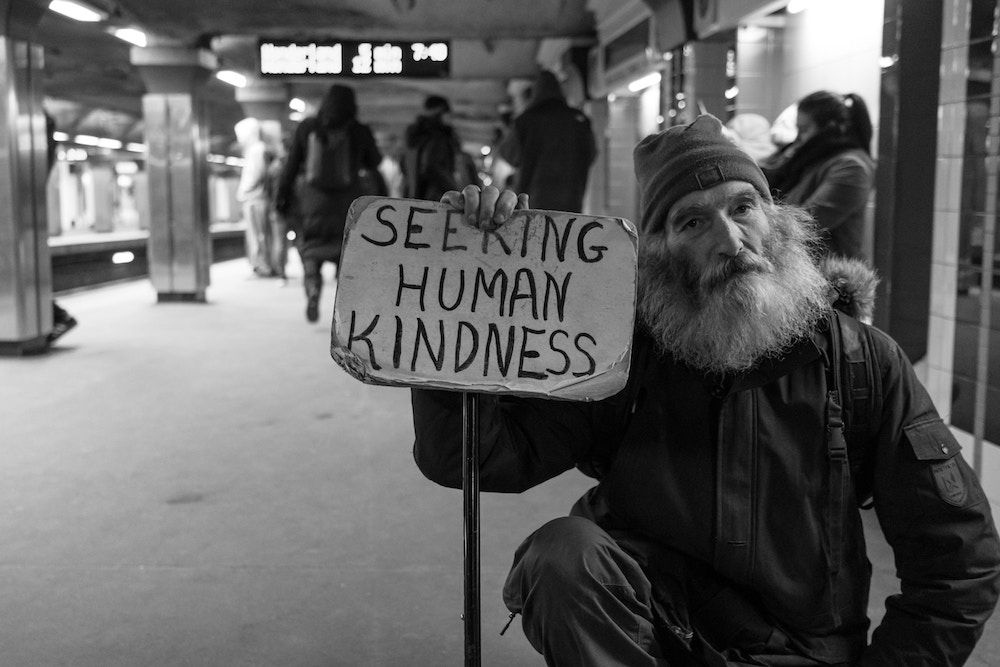In brief
In this contribution to Joining the Dots, Maeve McGoldrick discusses the importance of relationships in meeting the needs of the 170,000 people currently experiencing homelessness in the UK today.

Maeve McGoldrick
Head of Policy and Campaigns
Maeve works for Crisis, the national charity for homeless people, heading up the policy and campaigns team.
You can contact her on Twitter @MaeveMcgoldrick or by email at maeve.mcgoldrick@crisis.org.uk

Internationally, approaches to homelessness vary significantly. In Finland, where they have almost eliminated homelessness, people are provided with a home first and foremost. Housing someone who is currently homeless seems entirely obvious, however in the UK we often adopt what is called a ‘staircase’ model. This means that we support people, especially rough sleepers with complex support needs, off the streets and into a series of support programmes, until we feel they are ready for housing. Turning this on its head, and with over an 80% success rate is the Finnish, or Canadian, or US, model – Housing First. It does exactly what it says on the tin; houses people first.
Scepticism around Housing First centres on the belief that people need to be ready before they can be rehoused, otherwise we are setting them up to fail. In reality, people need a secure stable place to call their home (as we all do) so that they can engage in any support they might need to help them address other aspects of their life. Crucially, Housing First only works if the personal one-to-one support is available around the clock, to help someone adapt to living inside and to sustain their housing.
Without the deep and complex supportive relationship formed between support workers and the individual, it is most likely that Housing First will fail.
Not all homelessness is about rough sleepers with complex needs. The homeless population varies as much as the general population; some have varying complexities in their lives and others have one significant barrier to face; usually related to a housing need. To put this into context, of the 170,000 households experiencing homelessness in Britain today, Crisis has estimated that 18,000 of them will need a Housing First model due to experiencing high levels of support needs. However, to overcome complex barriers or one specific housing related problem, the success of the support people receive is more often than not determined by the nature of that one-to-one relationship.
You might say policy decisions drive homelessness and so it will take structural solutions to end it through better prevention. However, the human relationship is central to resolving it.
Crisis’ policy solutions are based around stronger prevention, rapid rehousing and support services to help people keep a home, as outlined in our plan to end homelessness. Whilst we campaign on these policy issues nationally, we know through the work of our eleven service centres, Skylights, that personal relationships are central to the success of moving people on from homelessness and preventing it where possible. Crisis model of support is based on three pillars; housing, employment and personal progression. Our services are run on a voluntary basis and are open to anyone that is experiencing homelessness, at risk of becoming homeless, or has experienced homelessness in the last two years.

The success of our service model is based around the role of the human relationship, and our ways of working and our approach to supervising and supporting staff to deliver is all based on the following principles and approaches:
1. Key pillars
Crisis’ services are structured around a model of change which identifies the key ‘pillars’ where individuals need to achieve a level of positive functioning to end their homelessness sustainably. One of the four areas is having positive social networks and relationships.
2. Outcome star
The importance of meaningful relationships is therefore at the heart of how we work to end homelessness, and also included in the tool we use to help people recognise their progress – using an ‘outcome star’.
3. Recovery approach
Our approach to working with individuals is informed by the recovery approach used in mental health and drug and alcohol treatment, as well as the theories and evidence base of attachment – all of which are premised on the theory that people are enabled and empowered to make positive changes in their behaviours and lives through psycho-social interventions, where the ‘therapeutic’ relationships between the ‘worker’ and the ‘client’ is one of trust and mutual respect, and it’s the relationship that enables change.
4. Collaboration
We also use a coaching approach to our work which is about creating a powerful collaboration between two people designed to move one person forward. It is conducted via a dynamic, focused conversation to raise awareness, invite ownership and release the unlimited potential that we all possess. Coaching seeks to transfer skills and knowledge to the coachee, enabling them to recognise and set meaningful goals and develop the skills they need to achieve them.
5. Emotional intelligence
A psychologically informed approach is about recognising our own role and contribution to a situation and being able to combine emotional intelligence and empathy to enable us to reflect, learn and adopt effective strategies.
6. Underlying issues
We seek to work with individuals in a psychologically informed way – recognising the behaviour some people present has underlying causes, and developing our approaches and interactions to address these issues, rather than reacting to the behaviours per se.
7. Skilled staff
All Skylight staff need to have the skills to engage with and build effective relationships with members. This involves demonstrating concern for the individual’s wellbeing and showing interest in them by: actively listening; involving them in decisions about them; showing people that someone believes in their potential, even when they may have lost sight of themselves (‘unconditional positive regard); keeping the door open (persistence); and being consistent and predictable in responses.
8. Staff training
We train all managers in facilitating reflective practice and use it in supervision. Effective supervision for case management involves establishing a working alliance between the supervisee and supervisor. This is a collaborative process where goals are mutually agreed and mutual trust, respect and care is established, to facilitate and effective process of evaluation and re-evaluation to be undertaken. This is essential to enable learning and development within supervision.
9. Trust
Psychologically informed approaches are all predicated upon the importance of a positive, trusting and professional relationships between a worker and a client.
10. Reflective practice
We use reflective practice in our work to help us understand our role and contribution to situations. This can be applied to our interactions with colleagues and external agencies, as well as our work with our members.
By campaigning to scrap laws like the Vagrancy Act, we will stop the criminalisation of homeless people. However, that will not automatically change the culture of the police and how they interact with homelessness. That is entirely dependent on improving their personal relations with rough sleepers they meet daily.
So, in short, we need both a radically new and bold policy mandate for ending homelessness, and this needs to be underpinned by an equally new and bold approach to building relationships between people experiencing homelessness and people there to help.
